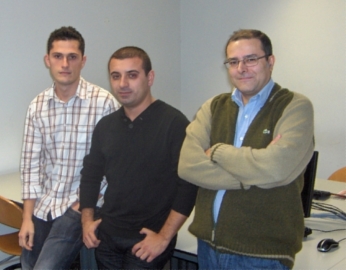Team with researcher from INESC Porto wins “Design Contest”
Cândido Duarte, PhD student in Electrical and Computer Engineering of the Faculty of Engineering of the University of Porto (FEUP) and Vítor Grade Tavares, professor at FEUP, both researchers at INESC Porto’s Telecommunications and Multimedia Unit, won, together with Daniel Oliveira (MSc student in Electrical and Computer Engineering at FEUP), the competition “Design Contest - TSMC 90nm LP MS/RF”. The results were announced on 21 October. The winners will have the opportunity to fabricate an integrated circuit for Radio Frequency (worth 7500 Euros) free of charge.
26th February 2010
The project was the result of the idea that Cândido Duarte had to implement an architecture for a radiofrequency amplifier for 2.45GHz with CMOS technology. The amplifier presents a 66% maximum efficiency, for a power output above 20dBm. The device was designed with 90nm technology from TSMC - Taiwan Semiconductor Manufacturing Company, currently one of the largest company developing integrated circuits.
The project, with the duration of a full school year, was developed in the context of Daniel Oliveira’s MSc Dissertation, supervised by Vítor Grade Tavares e de Cândido Duarte. The work took place at the Department of Electrical and Computer Engineering of FEUP and at the Microelectronics Students Group, where the last design aspects prior to the competition were developed.
The competition was promoted by Europractice, the institution that manages projects for the fabrication of integrated circuits at a European level and works as an interface with manufacturers around the world, guaranteeing lower costs to the academic world according to a European funding programme.
The researchers are quite pleased with the result. “the operation of the architecture with CMOS technology was surprising … The competition was also one of the motivations for us to choose this process. We knew that we didn’t have enough Money to fabricate the chip in this expensive process, but if we were to win the competition, then it would be possible. We took a risk and it paid off!”, Cândido Duarte and Daniel Oliveira added.
This is the second time that the Microelectronics Students Group, established little over a year ago, wins an international award from an a world renowned company.
BIP, November 2009


